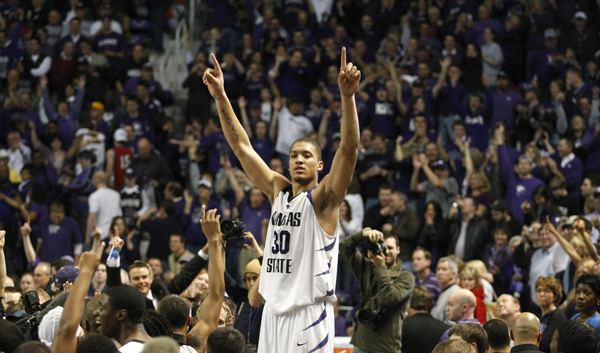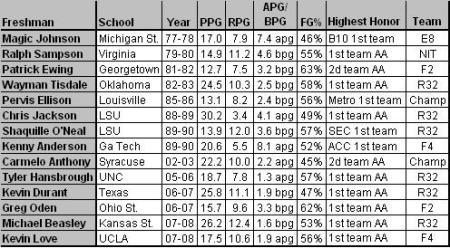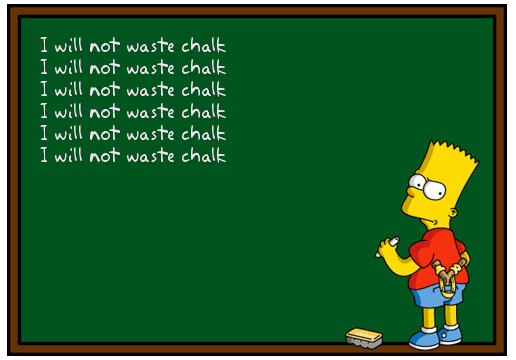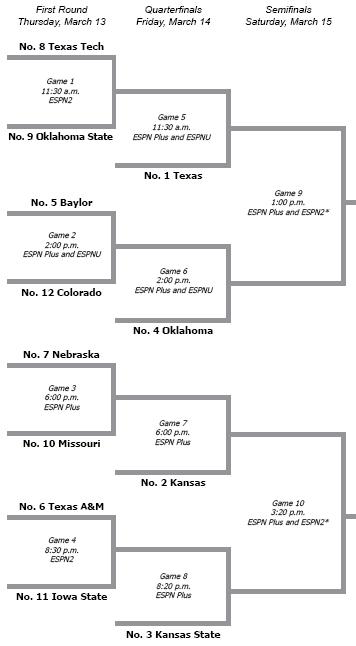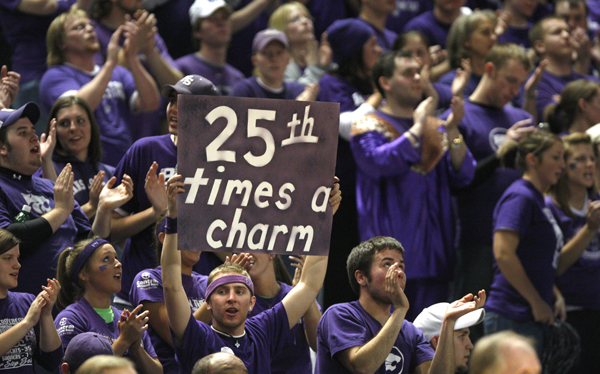Deal or No Deal – K-State Style
Posted by rtmsf on October 15th, 2008We came across a really insightful article today by Bob McClellan on Rivals that analyzed assistant coaching salaries at the top fifteen schools (by final ranking) during the 2007-08 season. Using FOIA again, McClellan discovered that there are significant inequities in what assistant coaches at several of these top public university programs are paid. After we picked our jaw up off the floor from awe at the size of these salaries for the assistants (!!!), we immediately focused in on the anomaly that McClellan made the keystone of his story – Kansas State assistant coach Dalonte Hill was paid $400,000 last season and is set to make $420,000 this year. From the article:
Hill, entering his sixth season as a college assistant, will make more money for the 2008-09 season than the entire three-man staffs at Ohio State, Washington State and Wisconsin and only $5,000 less than the staff at Texas, a survey done by Rivals.com shows. K-State released Hill’s contract in May. The school paid him $400,000 in 2007-08, and it will pay him $420,000 a year – $150,000 in base salary and $270,000 in “additional compensation,” defined as “television, radio, internet, promotional and other services” – for the next four years. He is entering his third year at K-State. Because private universities are not required to release salary information, it’s unknown whether Hill is the highest-paid assistant in college basketball. But based on Freedom of Information requests, Hill is far and away the highest-paid assistant among public universities that finished in the top 15 in the 2008 coaches’ postseason poll.

So what’s the catch here? Why is Hill making literally hundreds of thousands of dollars more than his peers? Oh, that.
After three years with the [Charlotte] 49ers, Bob Huggins lured Hill to Kansas State. Hill was responsible for the recruitment of [Michael] Beasley, who stuck with his pledge to play for the Wildcats even though Huggins left for West Virginia after just one season. Hill coached Beasley in the AAU ranks, and Beasley called him “like a big brother.” Beasley had committed to Charlotte while Hill was still there. When Huggins lured Hill to K-State, Beasley followed him. By then, Beasley had become the No. 1 prospect in the country.
So all of this talk got us to thinking… Beasley spent one year at K-State and it’s been argued in this space before that in terms of exposure and notoriety for the program, Beasley was an absolute WIN, even though he only stuck around Manhattan, Kansas, for one season. But to echo Howie Mandel, was it a good deal for KSU to pay Dalonte Hill so much money considering the financial impact that Beasley had on the program? The answer, my friends, is a resounding yes.
There are multiple ways to measure financial impact, but let’s keep this simple if we can. We’re only going to consider television and NCAA Tournament revenue because we can easily measure it, although ticket and merchandise sales were both also marginally up for the 2007-08 season.
Television Revenue. It’s difficult to find hard numbers on what FSN, ESPN and its family of networks pay schools per regular season basketball game, but this much we know to be true: for Big 12 football, ESPN pays $300k per game and FSN pays $150k per game. Let’s halve that for basketball to $150k/$75k per game. For ESPNU, ESPN+ and the FSN Regionals, let’s call it $50k per game. Using this model, in 2006-07, with new coach Bob Huggins but no Michael Beasley, K-State played on ESPN/ABC a total of seven times ($1.05M). The Wildcats played on ESPNU and the various regional channels another twenty times ($1.0M), which totals out just over $2M in television revenue in 2006-07 (note: we didn’t speculate about the K-State local channel because it’s unlikely to be substantive). In 2007-08, with Beasley in tow, K-State played on national television nine times ($1.35M), and the ESPNU/regionals a total of twenty-one times ($1.05M), for a net gain of $300K in television money with Beasley. (quick note: the Big 12 only participates in limited television revenue sharing, favoring instead a system that favors the teams on television more often – all but one KSU game was televised last year).
 NCAA Tournament. The Big 12, like every other conference, shares NCAA Tournament revenue equally among its member institutions. In a form of institutional socialism, each school that participates in a game in the Big Dance earns a “unit” of funds available – the more games played, the more units earned (e.g., the Big 12 earned 16 units last year). The NCAA then takes a six-year average of these units and doles out the aptly-titled Basketball Fund to each league accordingly – truly a payment-for-performance system. In 2006-07, the Big 12 earned $14.3M ($1.2M per school), and with help from K-State’s two units (the Beasley Effect), the Big 12 stands to earn $15.1M this year ($1.3M per school). An extra $100k may not seem like much in a vacuum, but the NCAA also provides each school with a $125k appearance fee per school per game (ostensibly for expenses), and since K-State played two games in the Dance, there’s an additional $250k to go along with the prior $100k. This results in another net gain of $350k from the prior year simply because Michael Beasley was good enough to get the Wildcats into the NCAA Tournament last year.
NCAA Tournament. The Big 12, like every other conference, shares NCAA Tournament revenue equally among its member institutions. In a form of institutional socialism, each school that participates in a game in the Big Dance earns a “unit” of funds available – the more games played, the more units earned (e.g., the Big 12 earned 16 units last year). The NCAA then takes a six-year average of these units and doles out the aptly-titled Basketball Fund to each league accordingly – truly a payment-for-performance system. In 2006-07, the Big 12 earned $14.3M ($1.2M per school), and with help from K-State’s two units (the Beasley Effect), the Big 12 stands to earn $15.1M this year ($1.3M per school). An extra $100k may not seem like much in a vacuum, but the NCAA also provides each school with a $125k appearance fee per school per game (ostensibly for expenses), and since K-State played two games in the Dance, there’s an additional $250k to go along with the prior $100k. This results in another net gain of $350k from the prior year simply because Michael Beasley was good enough to get the Wildcats into the NCAA Tournament last year.
Result. So through a simple analysis of television and NCAA Tourney revenues, we can already see a net gain of approximately $650k due to Beasley’s presence. Keep in mind again that we’re not even taking into account any ticket sales increases or merchandise sales increases that occurred because of the success of Beasley and his team. Nor are we considering any future residual effects – future exposure in terms of better recruiting and more television appearances as a result of Beasley – and still we’ve determined that, at minimum, Beasley’s one-year contributions to the program were at least $250k more (and likely much more in other impacts) than Dalonte Hill’s salary that season, and therefore, yes, K-State fans, you made a good deal.





























